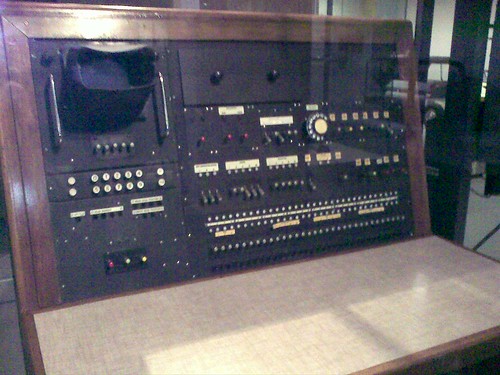In this series I’m going to look at some trends and developments in a range of technologies and try to see how they relate to each other and how they might impact on education over the the next few years.

One of the first things I would like to focus on is the digital divide and what I believe is the ‘myth’ that technology is expensive.
Firstly, I would like to state that the digital divide hasn’t been created by technology, but by economics. It’s a financial divide that has been around for thousands of years and one that thousands of years of paper education hasn’t been able to bridge.
 Here is some thing that I feel puts this in perspective though.
Here is some thing that I feel puts this in perspective though.Past
I first bought a computer in 1997. It cost almost £2,500. It was one of the first computers with an MMX chip which meant that, as well as connecting to the Internet (by unplugging my phone and connecting the cable to my computer) at a staggering 32k, if I waited long enough I could actually download and play extremely tiny and blurry video clips. When I paid extra (quite a lot extra) for some software I was able to create text and spread sheets and if I bought some more software I could edit images and make some pictures. This computer had the same storage capacity on the hard drive as that of all the computers in the UK in 1975 put together.
 Present
PresentTen years later in 2007 I bought an iPod Touch. It had ten times the capacity of the computer I had paid £2,500 for so that’s ten times the capacity of all the computers in the UK in 1975 combined. It fits in my pocket, connects to the Internet through wireless broadband, I can stream and watch high quality video, audio, read and create text, download literally thousands of small applications to modify the tasks it can do for me from using it as a recording studio to drum machine to games console and it cost me well below 10% of what I paid for the computer ten years earlier.

Future
If this rate of development remains consistent that means that by 2017 for around £20 I will be able to by some form of portable device that will have 100 times the capacity of all the computers in the UK in 1975 put together, carry it in my pocket, if I need to carry it at all, be able to access the biggest library of books, audio and video ever assembled in the history of humankind and create who knows what on it.
The educational potential of such a device at that price is truly astounding, especially when you put that in perspective against the price of books. That’s approximately the same price as just one students’ text book at today’s prices.
Often when I do talks or training on technology I get at least one teacher saying something about the digital divide, as if that were a good reason for not using technology in education (We’ll be making the digital divide bigger if we do!).
This has the same logic as refusing to give your students food because some people in the world are starving! Surely what we really want is to feed everyone and to educate everyone and perhaps for the first time technology is taking us to a place where that might just be possible. Personally, I’m looking forward to 2017.
In the next post in this series I'll be looking at the humble web cam and its possible role in the future of technology.
Related links
- Let us Now Praise Famous Women
- Technology news
- The Web 2.0 School of the Present
- Social Networks and the Web 2.0 Revolution: Part 2
Nik Peachey

No comments:
Post a Comment